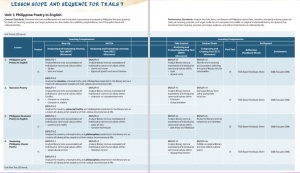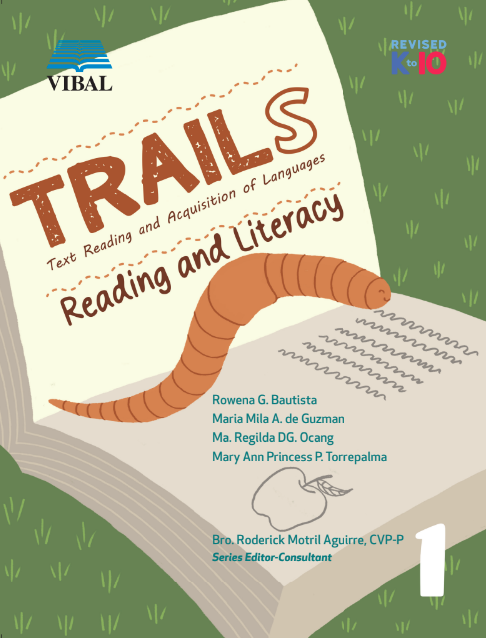
TRAILs: Teaching Reading and Acquisition of Languages
English
Details
TRAILs or Text Reading and Acquisition of Languages is a series based on the Department of Education’s Revised K to 10 Curriculum of the K to 12 Program. It is lovingly, meticulously, and systematically designed and grounded on the scientific body of knowledge that deals with how literacy is developed and learned in various contexts and societal demands represented in the texts used in the lessons and facilitates acquisition of the English language as used in Math, Science, Technology and Livelihood Education, and the Humanities.
TRAILs has a plethora of texts ranging from literacy to literary to journalistic to academic spaces presented in a continuum of literacy development from Grade 1 to Grade 10. The series, therefore, serves as a guidebook that takes learners on a journey of discovery: to explore different aspects of literacy and introduce them to different genres of literature (texts) presented in various modalities and provides them opportunities to practice their literacy skills. Ultimately, this new English Series promises to inspire and encourage learners to embark on a lifelong love of learning through literacy, language, and text.
TRAILs Grade 1 (Reading and Literacy) Authors and Editors:
- Rowena G. Bautista
- Maria Mila A. de Guzman
- Ma. Regilda DG. Ocang
- Mary Ann Princess P. Torrepalma
TRAILs Grade 1 (Language) Authors and Editors:
- Bro. Roderick Motril Aguirre
- Amapola L. Curioso
- John Lour G. Flores
- Marlyn B. Gerio
- Angela Diane M. Lara
TRAILs Grade 2 Authors and Editors:
- Bro. Roderick Motril Aguirre
- Mary Joyce N. Alfon
- Gemmalyn D. Aranzamendez
- Regina M. De Guzman
- Marilou A. Demeterio
- Ricardo T. Pialago, Jr.
- Lilibeth G. Valiente
TRAILs Grade 3 Authors and Editors:
- April S. Acorda
- Amapola L. Curioso
- Leonora San Pedro Damaso
- Maricris G. Sadsad
TRAILs Grade 4 Authors and Editors:
- Danilo G. Osorio
- Elizabeth M. Rural
- Alexander Simagala
TRAILs Grade 5 Authors and Editors:
- Sharmainelyn A. Bautista
- Rina C. De Silva
- Julyn A. Guba
- Roscel G. Jardin
- Irene S. Maniego
- Precilla R. Pamo
- Rio Peralta
- Analyn R. Roque
- Marie Antonette R. Santiago
- Reginaldo G. Suyom
- Diana Fe M. Valcoba
TRAILs Grade 6 Authors and Editors:
- Lilibeth L. Chua
- Imelda C. Ferrer
- Julyn A. Guba
- Maria Elizabeth H. Lamamigo
- Precilla R. Pamo
TRAILs Grade 7 Authors and Editors:
- Jennylyn M. Bibal
- Rowena D. Bunagan
- Iris F. Eliseo
- Ric Eldrid I. Pabico
- Jan-Mark M. Rosario
- Reginaldo G. Suyom
TRAILs Grade 8 Authors and Editors:
- Alexandrea S. Agpalo
- Rowena D. Bunagan
- Michelle T. Estavillo
- Nerissa S. Francisco
- Ric Eldrid I. Pabico
- Reginaldo G. Suyom
- Marilou S. Syjueco
TRAILs Grade 9 Authors and Editors:
- Astrid E. Arevalo
- Mirasol C. Eugenio
- Rhayn C. Leongson
TRAILs Grade 10 Authors and Editors:
- Alvin V. Dela Cruz
- Cielo May U. Pura
- Reginaldo G. Suyom
- Marilou S. Syjueco
- April Rose P. Tuason
KEY CHANGES IN THE CURRICULUM
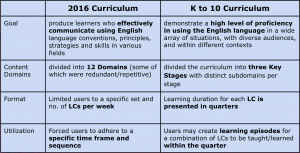
KEY ELEMENTS OF TRAILs
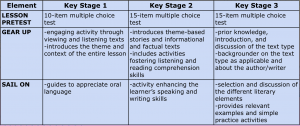
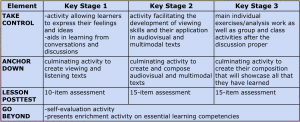
PARTS OF THE BOOK:
The Unit Opener shows the unit number with the unit title and a background picture. It also covers the unit introduction. In the sidebar is the list of lesson titles to be taken up in the unit or other add-ons that make the lessons more appealing and engaging.
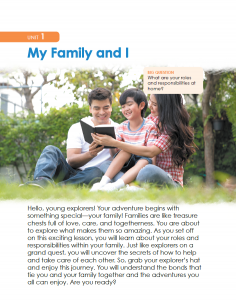
Unit Pre-Assessment is a 15-item multiple choice type of test that consists of questions based on the prior knowledge of the learners from the previous grade level/or lessons in the entire unit.
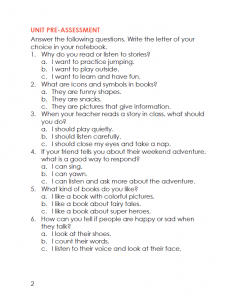
Lesson Opener shows the lesson number with the lesson title. In the sidebar are the target learning competencies and the lesson theme.
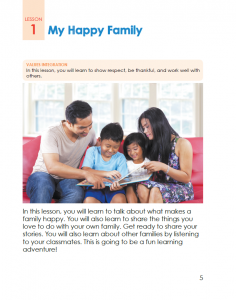
Lesson Pre-test is a 10-item multiple choice type of test which consists of questions based on the prior knowledge of the learners.
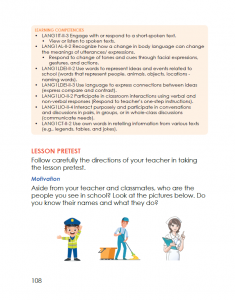
Gear Up offers activities to help young learners engage with and enjoy various viewing and listening texts, introducing the theme and context of the entire lesson.
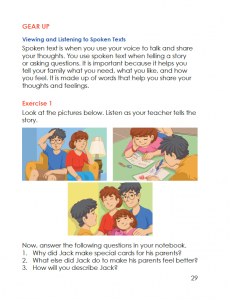
Sail On guides young learners to appreciate oral language by helping them notice language features, such as how changes in intonation can alter meaning, and how language reflects cultural practices and norms.
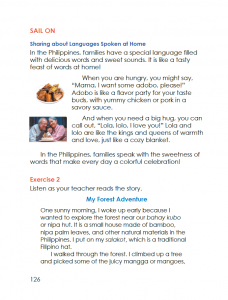
Take Control directs young learners to engage in activities that allow them to express their feelings and ideas, aiding them in learning how to interact with others and participate in conversations and discussions.
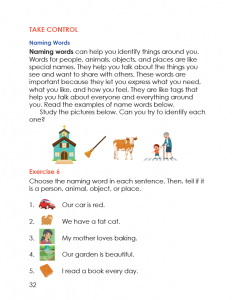
Anchor Down covers culminating activities that guide young learners to create viewing and listening texts using learned vocabulary, language features, and expressions based on the lesson’s identified theme and context.
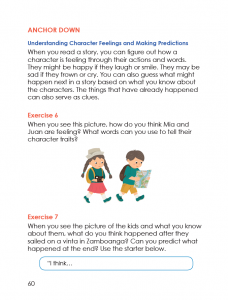
Post Test includes a 10-item assessment tool that evaluates the extent to which young learners acquired the focus learning competencies of the lesson, helping them identify areas that may need review.
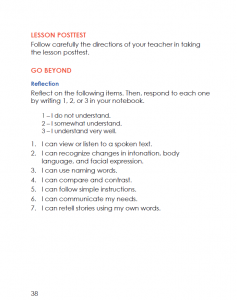
Go Beyond provides statements for young learners to reflect on and engage in self-evaluation of what they learned and what they did not. This section also presents enrichment activities on essential learning competencies for young learners to further deepen their understanding.
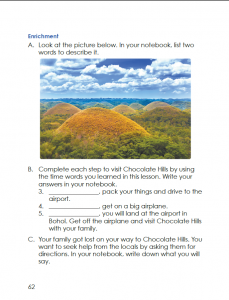
Unit Post-Assessment is composed of a 10-item multiple choice type of test to assess if the learners have acquired the learning competencies for the entire unit.
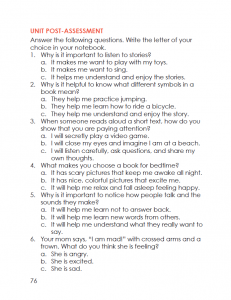
Sample Scope and Sequence (Grade 7)
